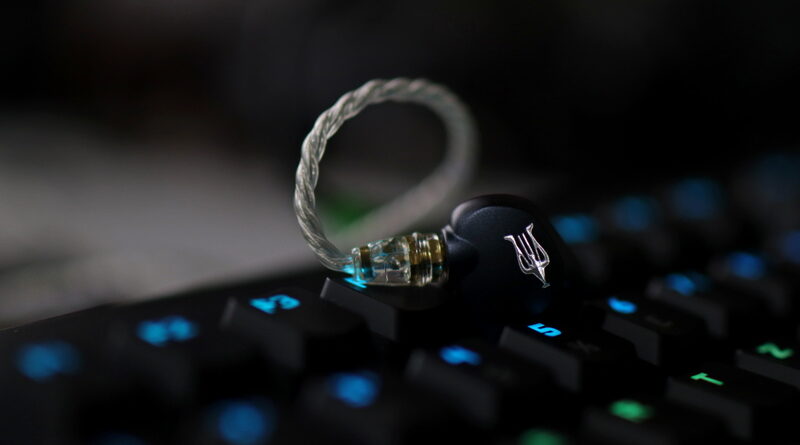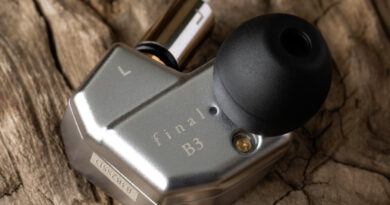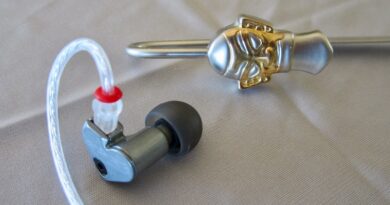Meze Rai Penta 5-Driver Hybrid IEM Review – Master Of One
Pros — Exceptional build quality and finish
– Very comfortable
– Natural tonality and timbre in the midrange with a vinyl-like feel
– Source agnostic for the most part
– Doesn’t get fatiguing even after long listening sessions
Cons — Sub-par bass response
– Treble extension is lacking
– Rai Penta has below-average technicalities
– Price
In this Article
INTRODUCTION
It’s hard being a flagship.
Just being “pretty good” across the board won’t cut it. Outright supremacy is the aim here, and that’s the bar that Meze Audio has set for themselves with their flagship Rai Penta, tested at $1099. It’s quite a jump considering that their previous highest-tier IEM was the Meze 12 Classics worth ~$80.
Meze did take their sweet time with the whole building and tuning process of the Rai Penta, which added further to the expectations. Then again — better safe than sorry. So, how close do the Rai Pentas get close to excellence? Read on.
Note: the ratings given will be subjective to the price tier. The Rai Penta was sent courtesy of the Review Tour. I would like to thank Andy sincerely for organizing the whole thing.
Sources used: Yulong Canary, Questyle QP1R, LG G7
Price, while reviewed: $1100. Can be bought from Meze’s Website.
PHYSICAL THINGS AND USABILITY
PACKAGING AND ACCESSORIES
The accessory set is more than adequate, but with a few caveats. You get basically everything you might need: 8 pair of tips (regular silicone, double-flanges and foams), a really good 4-core SPC cable with Rhodium plated jacks, a balanced upgrade cable, a fancy-yet-practical carrying case, a 3.5mm to 6.3mm jack (handy for certain amps), an airplane adapter (a rare sight nowadays) and a small cleaning brush. All of these are of rather high quality and I personally didn’t feel the need to use a third-party tip.
4.5/5
BUILD QUALITY
Well, Meze hit the ball off the park right at the start. The Rai Pentas are meticulously built, and the feel in hand/while wearing is especially sublime. They are sculpted from a single block of aluminium, and are as smooth as pebbles. You don’t feel the joints at all, and boy do they feel dense! The mmcx connectors are rather robust and didn’t seem to lose their solidity even after multiple cable swaps.
The nozzle has three sound-bores: one for the dynamic driver, and the other two for the dual mid and high BA drivers. These bores are also milled from aluminium and is a rather unique feature of these IEMs since many multi-BA IEMs use plastic tubes to channel the sound towards the bore. On the back, there is a curiously designed vent (presumably for the dynamic driver) that Meze calls the PES (Pressure Equalization System). It does its job seemingly well as there is no noticeable driver flex.
5/5
COMFORT, ISOLATION, AND FIT
The Rai Pentas are as comfortable as they come for a set of regular-fit universal IEMs. The smooth, beveled edges fit snugly in the ears and you can wear them for hours. Lying down with them is slightly problematic however as their weight tends to tilt them downwards. The stock tips are plenty comfortable for me, but you can of course try your favorite tips to see which fits best.
4.5/5
SOURCE AND EARTIPS
For this review, the primary source was Questyle QP1R. I used the stock tips since they worked fine for me. Also Rai Penta is fairly source agnostic so you can use any source to get it to loud volumes, but depending on source the balanced cable might provide slightly better separation.
DRIVER SETUP
The Meze Rai Penta is a 5-driver hybrid with a single-dynamic driver taking care of the low frequencies, two composite and customized (Knowles?) BA drivers for the mids, and two composite BA drivers for the highs and ultra-highs. The entire wave-guide and driver chamber is made up of CNC-cut aluminium, resulting in precise crossover-points and eliminating phase/crossover-related incoherency issues.

TONALITY AND TECHNICALITIES
Meze Rai Penta doesn’t have a bass-heavy signature, which is in stark contrast to their previous two IEMs (11 Neo and 12 Classics) both of which had prominent sub and mid-bass impact (a guilty pleasure, I concede). Bass decay is faster than average dynamic driver IEMs but nothing to write home about. There is a slight mid-bass bloom that adds body to snare hits and to certain baritone vocals but that’s about it. The sub-bass seems rather muted, which is disappointing. It’s more of a faint whimper than an actual rumble. In Audioslave’s Be Yourself, the opening bass-line can be heard, but not felt, and that’s the weakest part of these IEMs for me. Many prefer a bass-light signature, however, so this might be what they are looking for.
Midrange is where the Rai Penta shows its true prowess. This is one of the best midrange renditions I’ve heard in any IEM, period. Nothing is accentuated unevenly, no absurd 3K gain or scooped lower-mids *cough* LCD i4 *cough*. Vocals have a effortless quality to it, and even the highest-pitched female vocals don’t sound shrill or fatiguing. String instruments have a very natural attack and decay, and best of all — they don’t exhibit the “BA-timbre” that I often dread. Micro-detail retrieval is also a strong point, even though they are not exaggerated as certain other IEMs at this range and is mostly there if you want to focus on them rather than being obtrusive. Listening to Ben Howard’s Old Pine was an absolute delight, and you could hear every single breath that the singer drew. Switching to some metal, Deftone’s My Own Summer has an interesting mix of clean and growling vocals, and the transition between them is seamless. No phase-issues here (something that often plagues multi-BA hybrids) and it’s a job well done. One thing that the Rai Penta does really well is pulling out the mid-range details off of bass-heavy tracks. This can come handy if your library consists of some poorly mastered tracks.
Treble takes a back seat, just like the bass, though it’s less extreme in this regard. There is some treble energy around 8KHz so cymbals hits have a pretty noticeable initial attack (really useful if you listen to a lot of rock and metal). However, it take a nose-dive from there on and barely rises post 10KHz, resulting in a treble response that’s very relaxing and sibilance-free, but rather unexciting and unremarkable. It’s not an issue for slower tracks, as Dave Matthews Band’s Crash Into Me sounds oh-so-sweet and you don’t really notice anything missing. It’s the faster, heavier tracks that suffer. Machine Head’s Aesthetics of Hate could definitely sound better, especially around the solo section where there are numerous rapid cymbal hits. The Rai Penta doesn’t do justice to the grandeur of tracks like these, so it’s definitely an IEM more suited for slower genres.
Soundstage is average in width and above-average in terms of depth. It’s not a holographic sound-stage, neither is it a densely-packed one. Instruments have good layering but they are not spread apart like some other IEMs in its class. The mid-range being pulled forward is another factor here so I wouldn’t call this a huge negative. Imaging performance is good, but not exceptional. Cardinality (top-right/top-left) is where it suffers compared to other multi-BA flagships, which is surprising since Meze’s budget IEM, the 11 Neo, had fantastic imaging for its class. The Rai Penta is definitely not worse than the 11 Neo, but it is not class-leading like the 11 Neo was. In Yosi Horikawa’s Crossing (my go-to track for testing imaging performance), the initial passage is remarkably well done, but the moment the song gets busier with multiple instruments that fade in and out, the imaging loses its sharpness. Also another area where the Rai Penta falls short is overall dynamics. Macrodynamic punch is lacking, whereas microdynamics are not its strongest suit, resulting in instruments playing at about similar volume.
Bass: 3/5
Mids: 4.5/5
Treble: 3.5/5
Imaging/Separation: 3/5
Staging: 3.5/5
Dynamics/Speed: 3.5/5
Timbre: 4/5
SELECT COMPARISONS
vs Beyerdynamic Xelento: The Xelentos are one of my favorite universal TOTL IEMs, and for good reasons. They are very comfortable and are built like a tank (though I’m always wary of the mmcx connectors), not too dissimilar to the Rai Penta. In terms of sound signature, however, they are somewhat the exact opposites of each other.
Xelentos have an extended sub-bass that’s lifted a few dBs over the mid-bass, unlike the Pentas where you have a mid-bass boost while the sub-bass has a rather early roll-off. Mid-range takes a back seat on the Xelentos and are clearly an area of superiority for the Pentas. In case of treble, however, Xelentos are noticeably more emphasized on the regions between 5–8KHz, thus giving an impression of better detail retrieval. This does not work well for poorly mastered tracks, where Rai Pentas are more forgiving. Then again, if you want a more extended treble — Xelentos will provide you that unlike the Mezes.
Soundstage goes to the Xelentos, while imaging is about par on both. In summary: the choice between them would depend upon your own preference, as they complement each other rather than truly compete.
vs Campfire Andromeda: The Andromedas are build really well, but I’m not too fan of the paint-job myself (the green one that is) and they are significantly less comfortable than the Mezes. The stock cable of the Rai Penta is better, whereas the Andros got better stock eartips (Final E-type ftw!). A potential issue with the Andromeda is their hyper-sensitivity. These are too picky about sources, so you gotta spend some time (and most probably cash) to get them a suitable source where it doesn’t hiss like a kettle on a stove.
In terms of sound, both have a lean bass presentation, but I still prefer the dynamic bass on the Mezes (though it’s only marginally better than the allA Andromeda). Midrange is where the Rai Pentas shine, again. The upper-mids on the Andromeda sounds slightly more stringent in comparison and lacks the fullness of the male vocals that the Rai Pentas can deliver.
Treble, however, is the great differentiator between these two, with the Andromedas having one of the best treble responses around (even though they absolutely ravage poorly mastered tracks) while the Rai Pentas trading absolute detail retrieval for a more relaxing signature. In terms of soundstage and imaging, Andromeda reigns supreme. Both are, however, not suitable for metal genres and sub-genres for the most part as those genres are usually not mastered well and can get either too intense (Andromeda) or too dull (Rai Penta). So if you are a closet metalhead like yours truly, I guess you will be left asking for something different entirely. In terms of soundstage and imaging, Andromeda reigns supreme. Period.
CONCLUDING REMARKS
The Rai Pentas are not the $1000+ end-all and be-all of things. It lacks a distinct wow-factor, and that perhaps is the biggest flaw of these IEMs. That’s a darn shame though, as the midrange here is beautifully rendered. Despite the lack of extension on both ends, I can see how these might captivate long-time who tend to focus more on the midrange.
So while the Rai Pentas fall short of a number of aspects of the sound, they excel at certain others. The build quality is as good as it gets, and they do the midrange oh-so-well that it keeps a lingering “what if” in your mind — what if these got everything right? Ah well, who knows if such a thing even exists at all.
Meze got part of the equation right with their initial attempt at a flagship. The rest of it — hopefully they hit the jackpot with the successor. Meanwhile, if you are solely looking for a flagship IEM that excels at vocals and acoustic genres — give these a try. They just might be what you are looking for.
MY VERDICT
3.5/5
Great midrange tonality held back by sub-par bass response/technicalities.
DISCLAIMER
Get the Penta from Meze’s Website
Our generic standard disclaimer.
PHOTOGRAPHY
You find an INDEX of our most relevant technical articles HERE.











Pingback: Meze Rai Penta 5-Driver Hybrid IEM Review - GearOpen.com